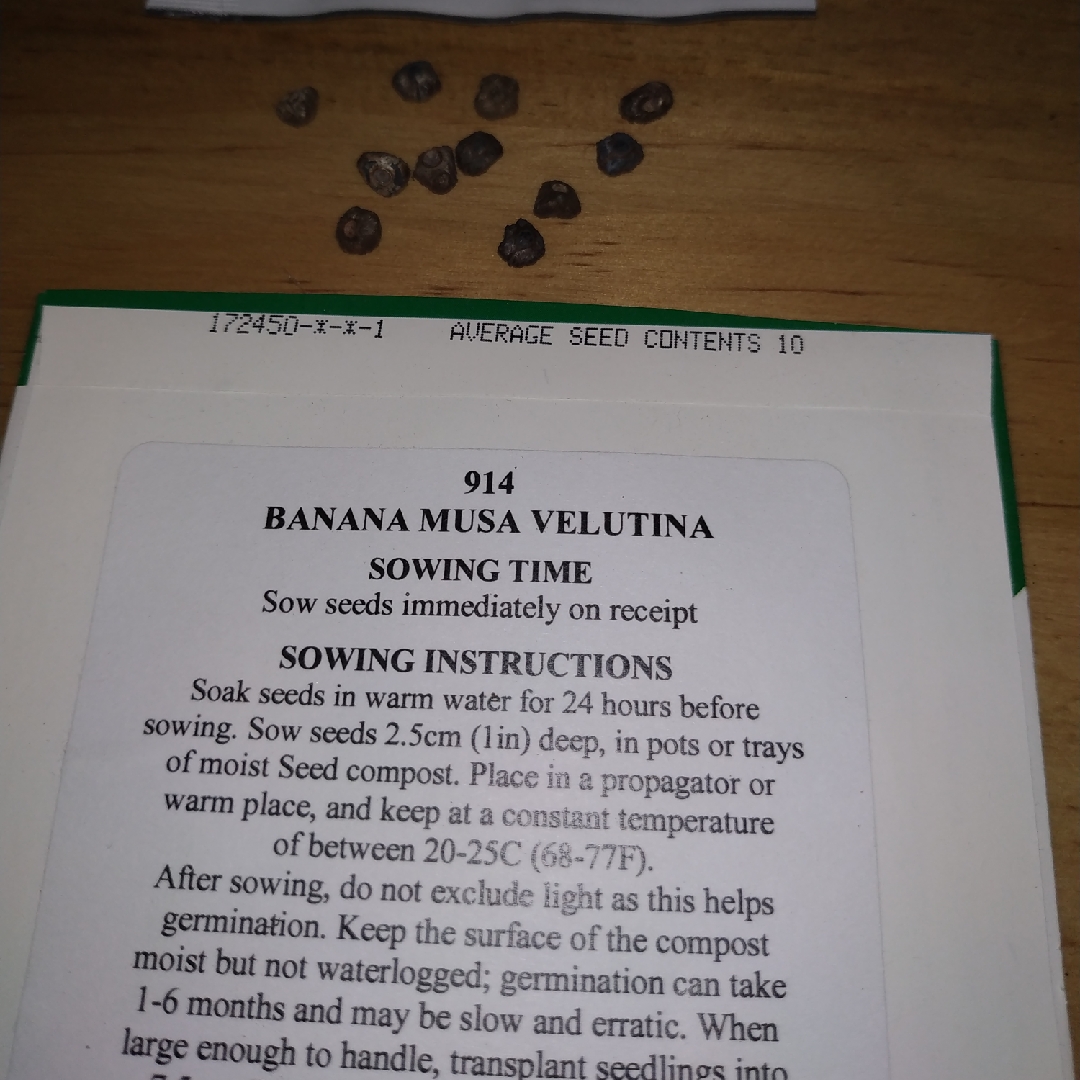
Musa Velutina
Banana (Musa Velutina)
Musa is a genus which contains both bananas and plantains. Varieties have been developed to produce the edible fruit we know as bananas. Starchier varieties used for cooking are called plantains. Far more varieties are cultivated as architectural plants that may develop inedible fruits. Although they are tender plants, some species are hardy enough to leave outside over winter in temperate climates, especially in the milder regions which makes them worth experimenting with in the garden. Musa velutina flowers at a young age, and can produce flower in its first year. The fruits are fruits are 8cm long, pink, and fuzzy and are edible. It is often grown as an ornamental plant.
Contributed by @kimmy01
-
Full sun
-
Frequent watering
-
Not Frost hardy
-
Rich and free draining
Common name
Banana (Musa Velutina)
Latin name
Musa Velutina
type
Tender plant
family
Musaceae
ph
6.0 - 7.5 Acid - Neutral
Plant & bloom calendar
-
Best time to plant
full grown dimensions
 1.20 M
1.80 M
1.20 M
1.80 M
Musa Velutina
Musa is a genus which contains both bananas and plantains. Varieties have been developed to produce the edible fruit we know as bananas. Starchier varieties used for cooking are called plantains. Far more varieties are cultivated as architectural plants that may develop inedible fruits. Although they are tender plants, some species are hardy enough to leave outside over winter in temperate climates, especially in the milder regions which makes them worth experimenting with in the garden. Musa velutina flowers at a young age, and can produce flower in its first year. The fruits are fruits are 8cm long, pink, and fuzzy and are edible. It is often grown as an ornamental plant.
Planting young plants
From Late Spring TO Late Spring
When planting young plants, choose a sheltered site, out of known frost pockets. Shelter from the wind is also essential to prevent leaves being shredded. Plant in late spring, in a well-drained soil, enriched with well rotted manure or organic compost. Once plants are established, water and feed generously to get the best foliage. Smaller banana species make ideal container plants, which can be placed outdoors for the summer and brought indoors over winter. Plant in a loam-based compost, such as John Innes No. 3 with extra grit and site them in full direct sunlight and keep well watered.








